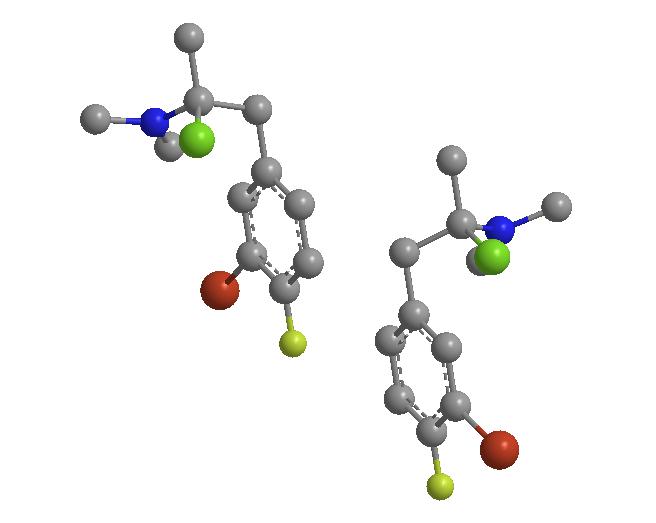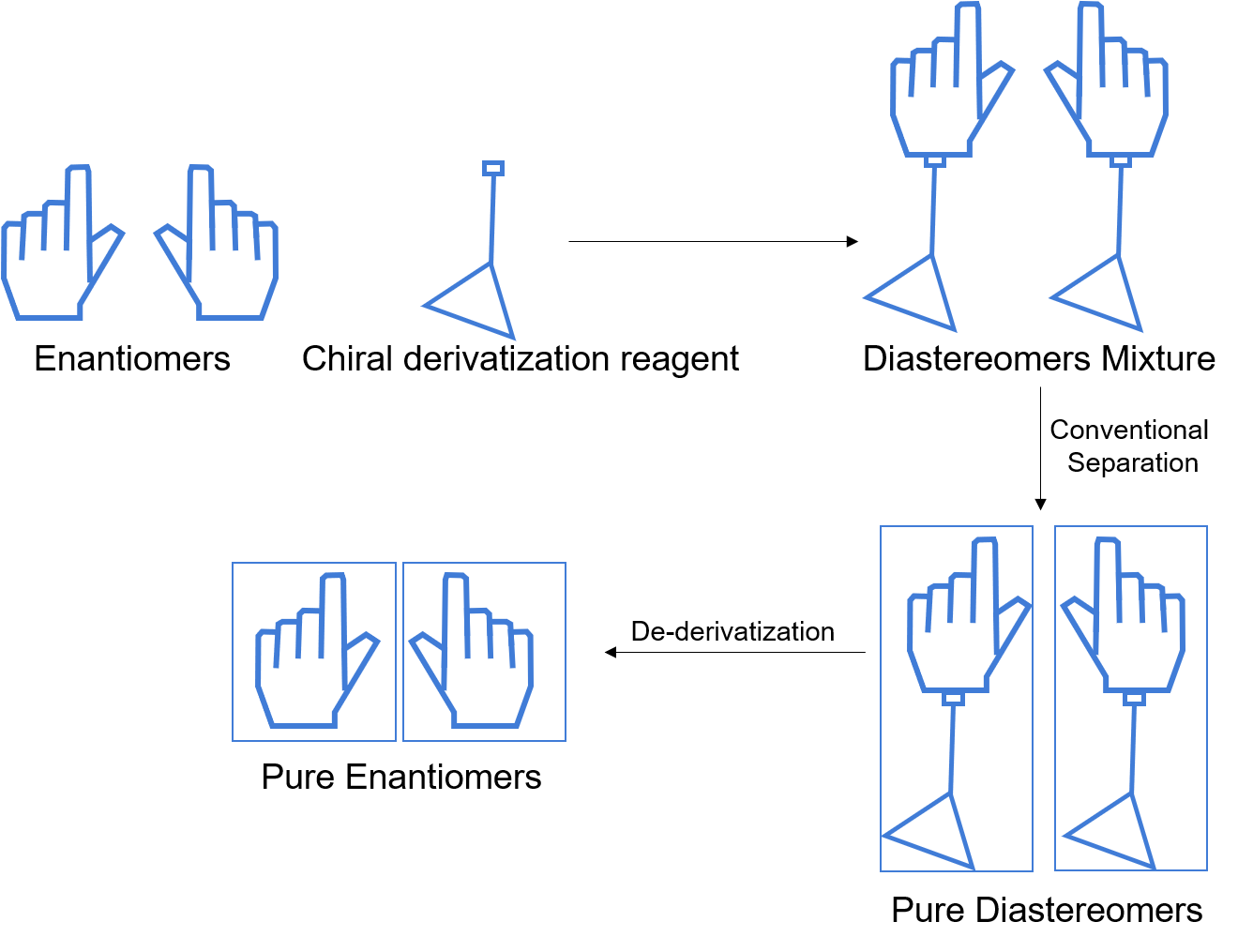BOC Sciences has a large number of fast and efficient HPLC and SFC equipment, which can be applied to the rapid separation of various other types of compounds, such as natural products, synthetic products and by-products, and heat-sensitive and unstable substances. Our professional technicians and experts can provide ideal solutions for chiral separation and purification to meet the application needs of scientific research, production and quality control.
The method for the purification of enantiomers by high performance liquid chromatography (HPLC) and supercritical fluid chromatography (SFC) is generally referred to as the continuous adsorption and desorption of compounds between the stationary phase (the column) and the mobile phase, so that different compounds can be separated. Because different compounds dissolved in the mobile phase have different forces with the stationary phase, the residence time in the stationary phase is different, and they flow out from the stationary phase successively. Some chiral substances and spatial isomers have almost the same polarity, so they are difficult to separate. Therefore, special chiral columns are needed to separate them for purification.
 Fig.1 Enantiomers
Fig.1 Enantiomers
BOC Sciences has state-of-the-art HPLC and SFC equipment, as well as a dedicated team of experts who can customize your chiral separation and purification services.
BOC Sciences offers preparative-scale supercritical fluid chromatography (SFC) for the isolation of enantiomers in gram-to-kilogram quantities. Compared with analytical methods, preparative SFC combines high throughput with reduced solvent consumption, making it especially suitable for pharmaceutical and fine chemical industries. Our platform supports:
Chiral HPLC is usually divided into the direct method and indirect method. The indirect method is also called chiral derivatization reagent (CDR). Direct methods include chiral stationary phase (CSP) and chiral mobile phase (CMP).
Tens of thousands of chiral compounds have been separated by HPLC, far exceeding the sum of the enantiomers of about 7,000 chiral compounds isolated over nearly 100 years using conventional chemical methods.
CDR is the reaction of enantiomers with chiral optical reagents to generate a pair of diastereomers and then separate them on a conventional stationary phase (Achiral stationary phase). The advantage of this method is that the separation conditions are relatively simple, and can be applied to conventional HPLC conditions. After derivatization, the detection (UV or fluorescence) sensitivity is also improved. Commonly used chiral derivatization reagents are isothiocyanate (ITC), isocyanate (IC), naphthalene derivatives, carboxylic acid derivatives and amines.
 Fig.2 Principle of CDR
Fig.2 Principle of CDR
CMP does not need to prepare enantiomers into derivatives in advance, but only needs to add chiral additives to the mobile phase. The chiral additives and the enantiomers of the solute form a pair of diastereomeric complexes, which are separated on a common chromatographic column. Although the various chiral complexes formed by chiral additives and enantiomers are not as strong as the derivatives formed by CDR, the diastereomeric properties of the complexes based on chiral recognition are essentially the same. The advantage of this method is that it does not require pre-column derivatization and there are no special requirements for column packing. Commonly used chiral additives include cyclodextrin, chiral ion pair additives and ligand exchange additives.
 Fig.3 Principle of CMP
Fig.3 Principle of CMP
The chiral reagent is chemically bonded to the stationary phase to form a diastereomeric complex with the enantiomer. Due to the differences in the stability of the diastereomeric complexes, the retention times of the two enantiomers are not consistent. Enantiomers that form poorly stable diastereomers with CSP can be eluted first to achieve chiral separation. It is a method that does not undergo direct conversion into diastereomers. The advantages of the chiral stationary phase resolution method are that it is easy to prepare and can be applied to the resolution of various types of compounds. Commonly used CSP types are Pirkle type, cyclodextrin, polysaccharides and proteins.
 Fig.4 Principle of CSP
Fig.4 Principle of CSP
Supercritical fluid chromatography (SFC) is a chromatographic separation method that uses supercritical fluid as the mobile phase. A supercritical fluid is a fluid between gas and liquid, and has the advantages of both liquid and gas. The mobile phase of SFC uses high-density compressed gas to replace most liquid mobile phases. Among them, carbon dioxide is the most commonly used. Carbon dioxide is a non-polar solvent. In order to increase the dissolving and eluting ability of mobile relative to polar compounds, organic modifiers, mainly alcohols, are often added.
The equipment is very similar to high performance liquid chromatography (HPLC). SFC is usually a normal phase technique because the components run in a low-to-high polarity program. However, compared with normal phase HPLC, SFC has the advantages of fast analysis speed, high separation efficiency, and less organic solvent usage. SFC basically covers the same range of applications as HPLC. The separation of SFC and HPLC shows a certain degree of complementarity.
SFC is similar to HPLC and is usually divided into direct and indirect methods. The direct method can be divided into chiral stationary phase method (CSP) and chiral mobile phase method (CMP). The indirect method mainly refers to the chiral derivatization reagent method (CDR).
The direct method includes the use of chiral stationary phases and chiral mobile phases. The specific operation is basically the same as HPLC. The chiral stationary phases(CSPs) of SFC are developed on the basis of the HPLC and GC chiral stationary phases. There are already a large number of commercial CSPs available. Generally, CSPs are classified into amides, cyclodextrins, and polysaccharides according to types of chiral selectors. Except for crown ethers and proteins, most CSPs can be directly used in SFC without any further improvement.
The indirect rule is based on chiral derivatization. The enantiomers are first converted to diastereomers and then separated by achiral stationary phases.
At present, the direct separation method of the chiral stationary phase is the fastest growing field, and the indirect method is relatively less used.
 Fig.5 Enantiomeric Purification
Fig.5 Enantiomeric Purification
BOC Sciences has a large number of advanced HPLC and SFC equipment, and a team of professional technicians and experts can provide you with the most satisfactory chiral separation and purification services.
Enantiomeric purification by HPLC and SFC is widely applied in:
Our enantiomeric purification services follow a clear workflow to ensure consistent quality:
Deliverables include synthesis records, HPLC/SFC chromatograms, MS and NMR spectra, and purity reports. Each project is supported by strict quality control and confidentiality management.
What is the difference between HPLC and SFC in chiral purification?
High-Performance Liquid Chromatography (HPLC) uses liquid mobile phases to separate compounds, while Supercritical Fluid Chromatography (SFC) uses supercritical CO₂ combined with organic modifiers. SFC often provides faster separations, lower solvent consumption, and excellent chiral selectivity compared to traditional HPLC.
What is SFC in chromatography?
Supercritical Fluid Chromatography is a separation technique that uses a supercritical fluid—typically carbon dioxide—as the main mobile phase. It offers high efficiency, rapid analysis, and is particularly effective in separating enantiomers and other closely related compounds.
How does HPLC separate enantiomers?
Chiral HPLC separates enantiomers using a chiral stationary phase that interacts differently with each enantiomer, resulting in distinct retention times. This allows for baseline resolution and accurate quantification of enantiomeric purity.
What is an HPLC reference standard?
An HPLC reference standard is a highly pure compound with a well-characterized structure used to calibrate and validate chromatographic methods. In chiral analysis, reference standards help confirm the identity and retention time of each enantiomer.
What enantiomeric purification capabilities does BOC Sciences provide?
BOC Sciences offers comprehensive enantiomeric purification services using both HPLC and SFC platforms. Our expertise includes chiral method development, large-scale enantiomer isolation, and optical purity determination for a wide range of chiral compounds.
BOC Sciences integrates high-performance liquid chromatography and supercritical fluid techniques for precise enantiomer purification. Our solutions ensure purity and yield optimization.
Submit your inquiry to request a custom solution.
If you have any questions or encounter issues on this page, please don't hesitate to reach out. Our support team is ready to assist you.